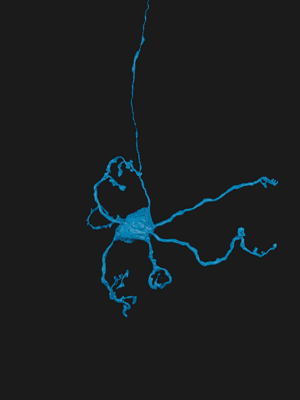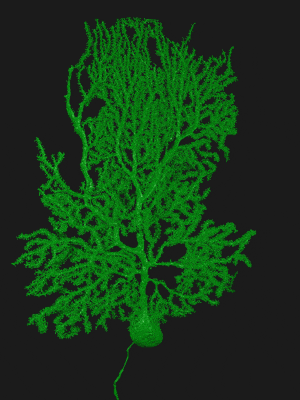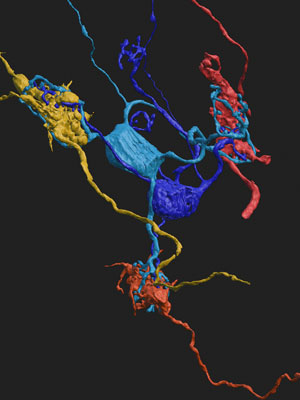
Many of us have seen microscopic images of neurons in the brain — each neuron appearing as a glowing cell in a vast sea of blackness. This image is misleading: Neurons don’t exist in isolation. In the human brain, some 86 billion neurons form 100 trillion connections to each other — numbers that, ironically, are far too large for the human brain to fathom.
Wei-Chung Allen Lee, Harvard Medical School associate professor of neurology at Boston Children’s Hospital, is working in a new field of neuroscience called connectomics, which aims to comprehensively map connections between neurons in the brain.
“The brain is structured so that each neuron is connected to thousands of other neurons, and so to understand what a single neuron is doing, ideally you study it within the context of the rest of the neural network,” Lee explained.
Lee recently spoke to Harvard Medicine News about the promise of connectomics. He also described his own research, which combines connectomics with information on neural activity to explore neural circuits that underlie behavior.
Harvard Medicine News: To start with a basic question, what is connectomics?
Lee: We define connectomics as understanding how individual neurons are connected to one another to form functional networks. The goal is to create connectomes, or detailed structural maps of connectivity where we can see every neuron and every connection. What’s unique is the comprehensiveness of connectivity: In a perfect connectome, we’d know how every neuron was connected to every other neuron.
We believe that the connectivity of neurons is fundamental to how they function, since they must receive information from each other in order to use this information. Having comprehensive data about connectivity allows us to look at higher-order interactions between populations of neurons that are important for brain function and behavior. It is challenging to study higher-order interactions without connectomics.
Some have argued that you are your connectome. When you fall asleep at night, your brain activity dramatically changes, interrupting your thoughts and feelings — but when you wake up, you resume your thoughts and feelings without any break in your sense of self. This is likely because your brain connectivity has remained largely intact through the night. In essence, the structure of how our neurons are wired is our “self,” and connectomics is the key to understanding this structure.
Science & Medicine, Delivered
Harvard Medicine magazine in your inbox








